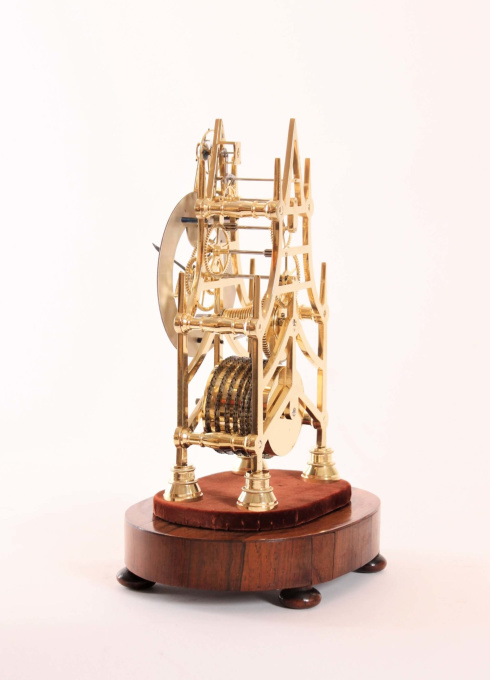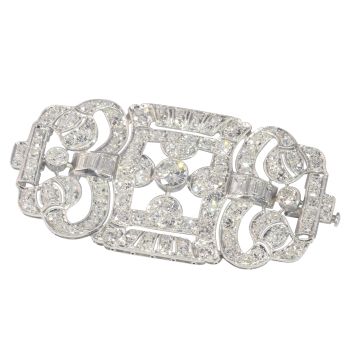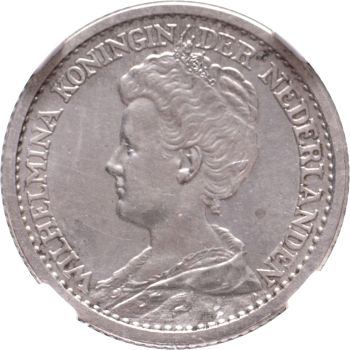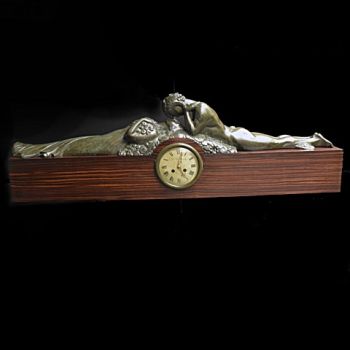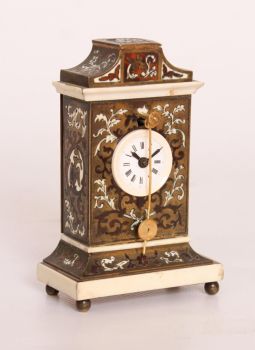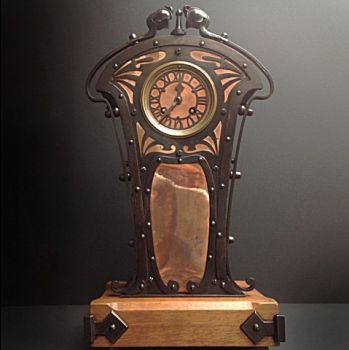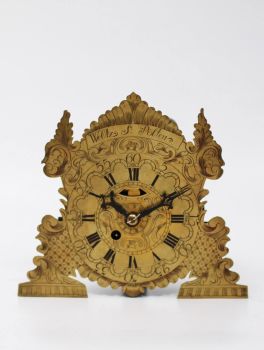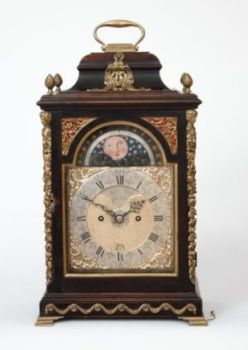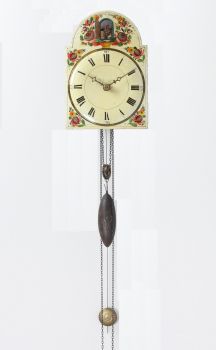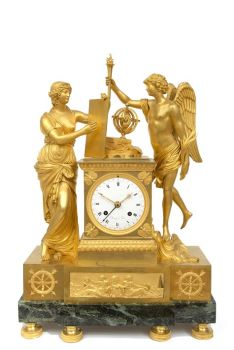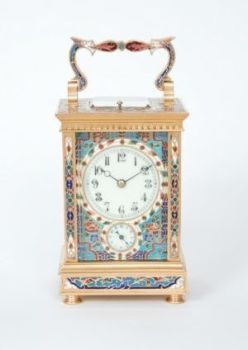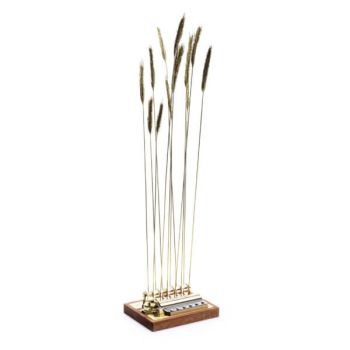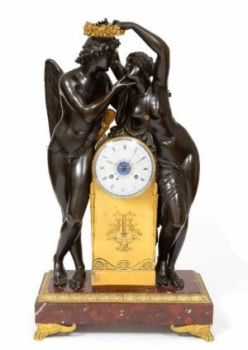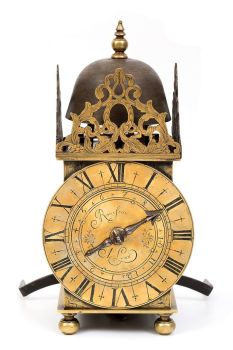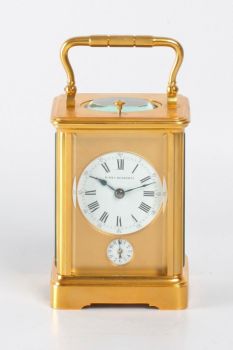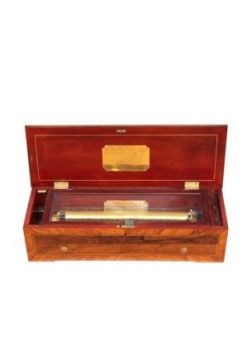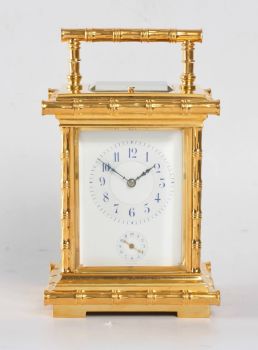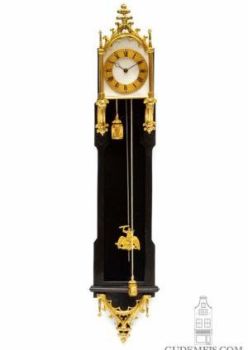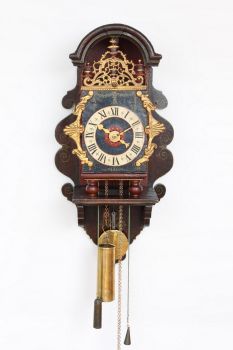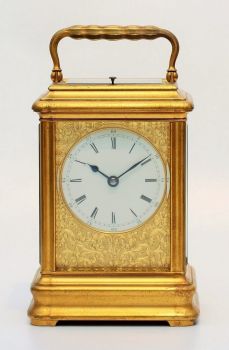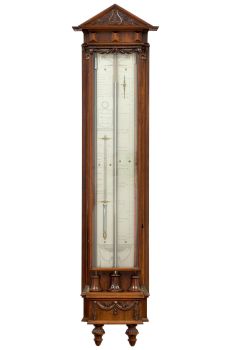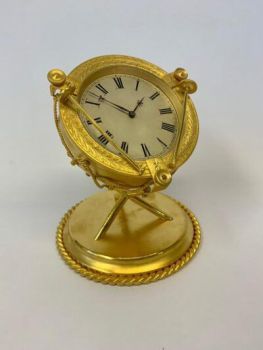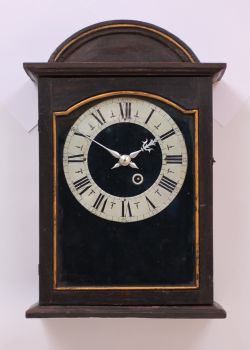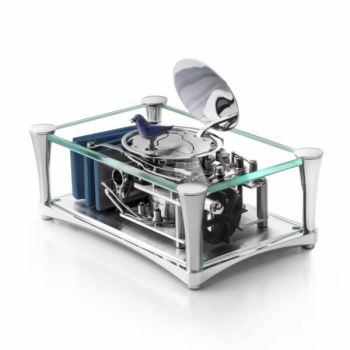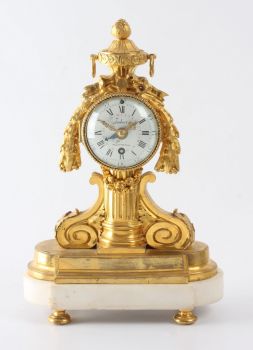A small English brass skeleton clock with balance wheel, circa 1840 1840
Artiste Inconnu
37 ⨯ 18 ⨯ 14 cm
Actuellement indisponible via Gallerease
- Sur l'oeuvre d'artThe chapter ring
The 10-cm engraved silvered chapter ring has Roman numerals and a seconds subsidiary under XII. The Breguet hands are made blued steel.
The movement
The substantial skeletonized plates have Gothic pinnacles and are connected with well turned baluster pillars. The movement is driven by a spring barrel with fusee and chain. It can run eight days on a winding. It is being regulated by a plain balance in combination with an English lever escapement which is a fairly rare feature for skeleton clocks.
The case
The on Gothic architecture inspired frame is raised on four turned feet and is placed on an oval rosewood base on flat feet. The clock is covered by a glass dome. On the bottom is a hand written label inscribed; .. clock was beque(thed) to Robert Whitmore by Admiral the Hon.ble Sir Courtenay Boyle May 1844. - Sur l'artiste
Il peut arriver qu'un artiste ou un créateur soit inconnu.
Certaines œuvres ne doivent pas être déterminées par qui elles sont faites ou elles sont faites par (un groupe d') artisans. Les exemples sont des statues de l'Antiquité, des meubles, des miroirs ou des signatures qui ne sont pas claires ou lisibles, mais aussi certaines œuvres ne sont pas signées du tout.
Vous pouvez également trouver la description suivante :
•"Attribué à …." A leur avis probablement une oeuvre de l'artiste, au moins en partie
•« Atelier de …. ou « Atelier de » À leur avis, une œuvre exécutée dans l'atelier ou l'atelier de l'artiste, éventuellement sous sa direction
•« Cercle de… ». A leur avis une oeuvre de la période de l'artiste témoignant de son influence, étroitement associée à l'artiste mais pas forcément son élève
•« Style de … ». ou "Suiveur de ...." Selon eux, une œuvre exécutée dans le style de l'artiste mais pas nécessairement par un élève ; peut être contemporain ou presque contemporain
•« Manière de… ». A leur avis une oeuvre dans le style de l'artiste mais d'une date plus tardive
•"Après …." A leur avis une copie (quelle qu'en soit la date) d'une oeuvre de l'artiste
•« Signé… », « Daté… ». ou « Inscrit » À leur avis, l'œuvre a été signée/datée/inscrite par l'artiste. L'ajout d'un point d'interrogation indique un élément de doute
• "Avec signature ….", "Avec date ….", "Avec inscription …." ou "Porte signature/date/inscription" à leur avis la signature/date/inscription a été ajoutée par quelqu'un d'autre que l'artiste
Artwork details
Related artworks
Artiste Inconnu
Set Franse Empire Pendules / Empire Lectura penduleearly 19th
Prix sur demandeKuipers Kunst & Antiek
1 - 4 / 12Artiste Inconnu
Set Franse Empire Pendules / Empire Lectura penduleearly 19th
Prix sur demandeKuipers Kunst & Antiek
Artiste Inconnu
Engels struttclock gesigneerd H.Rodrigues 42 Piccadilly 19th century
Prix sur demandeNico van den Assem restauratie
1 - 4 / 24


